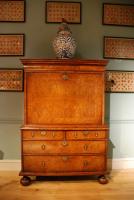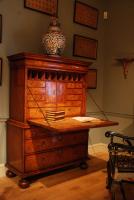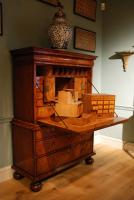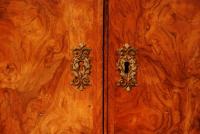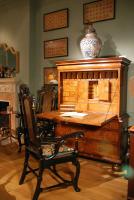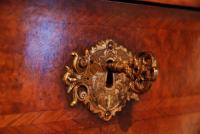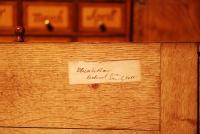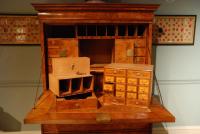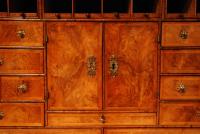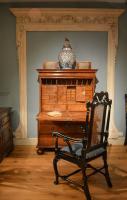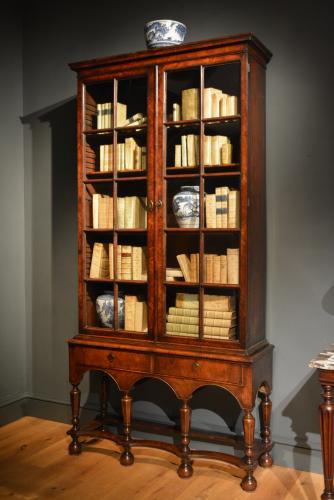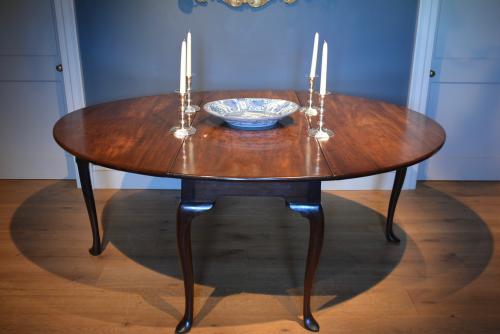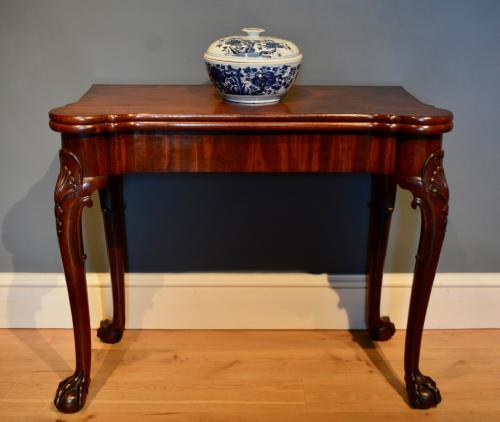
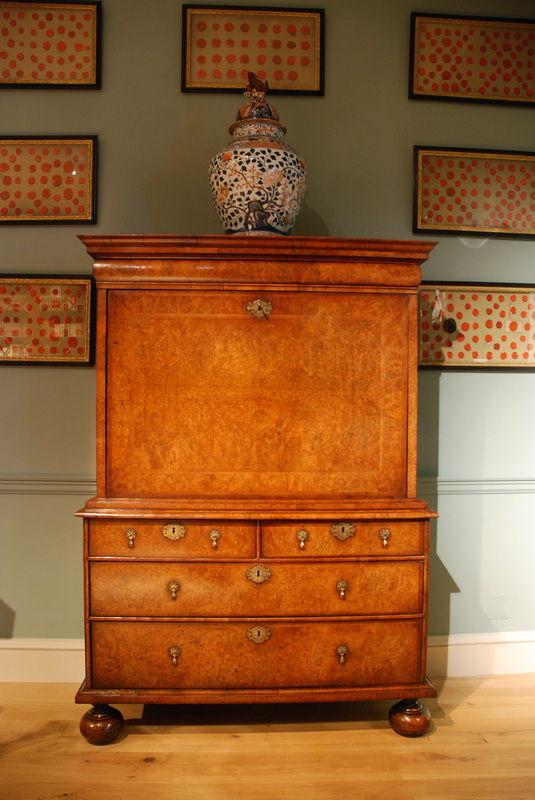
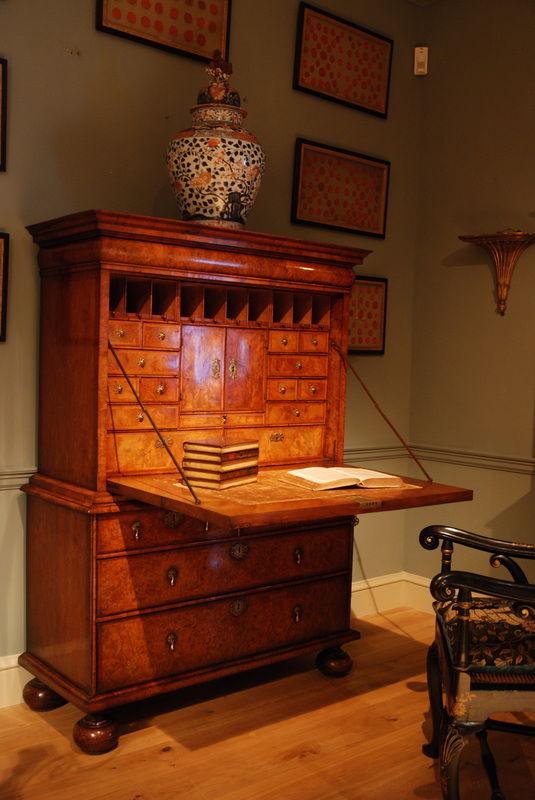
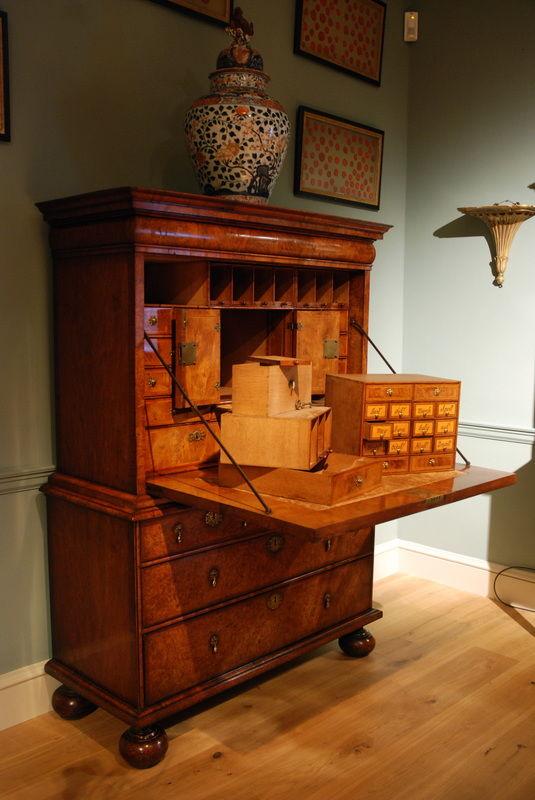
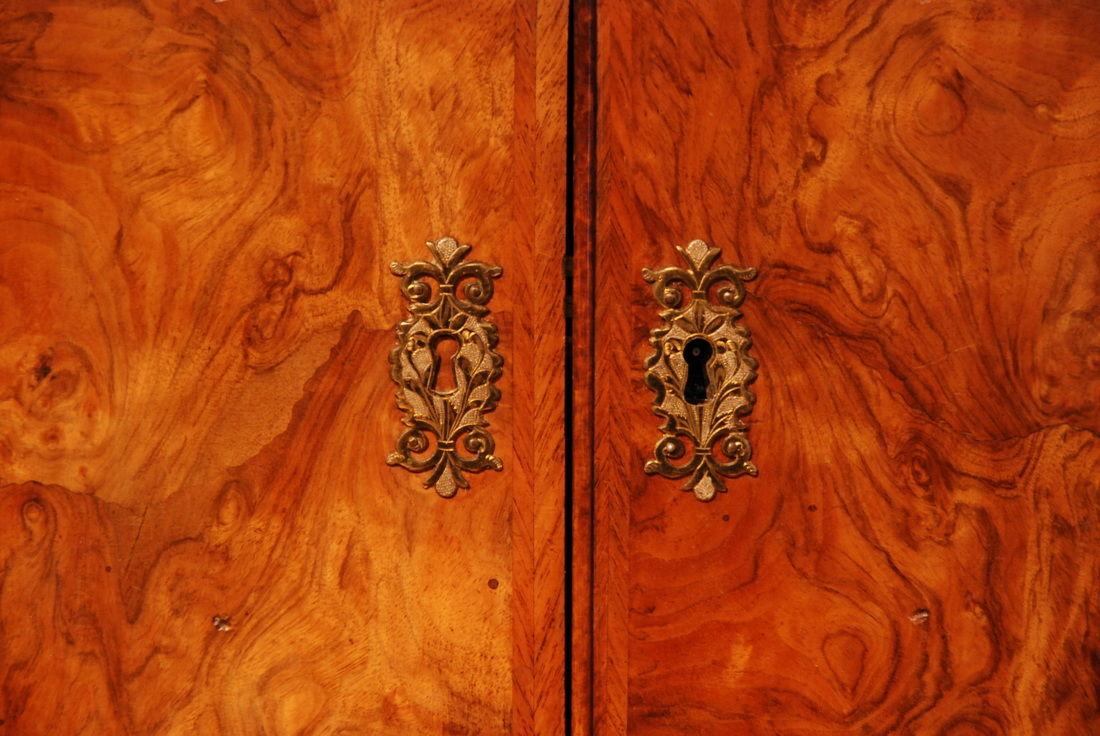
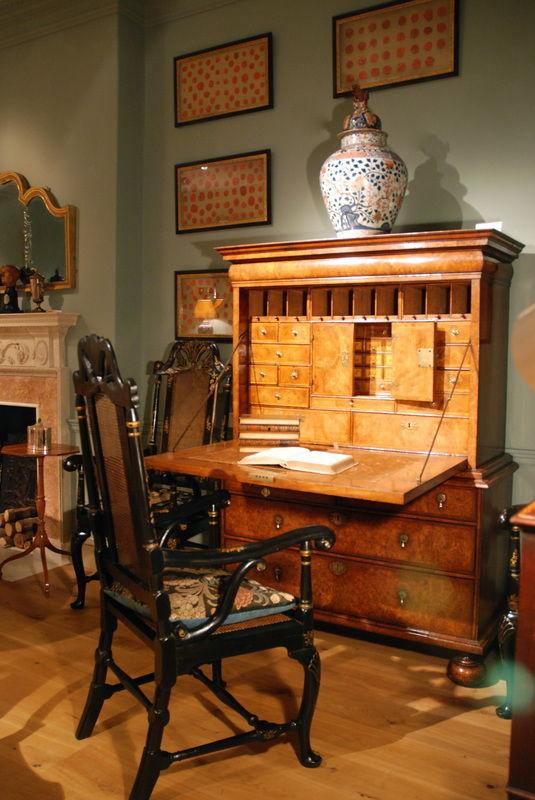
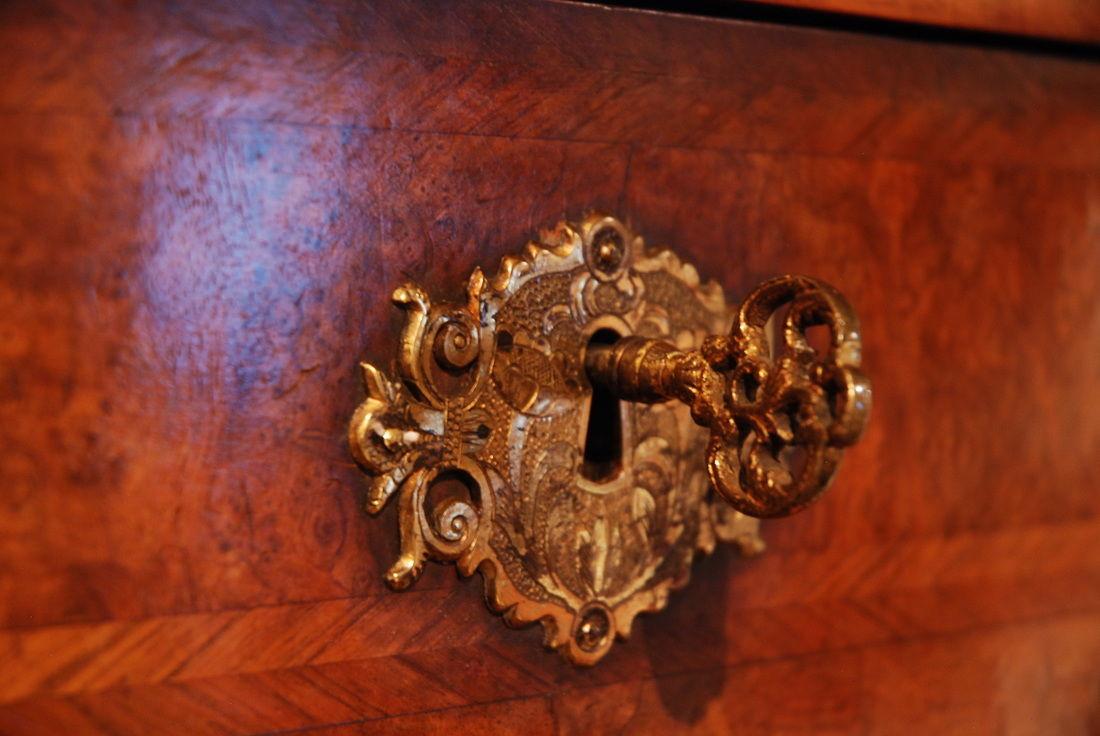
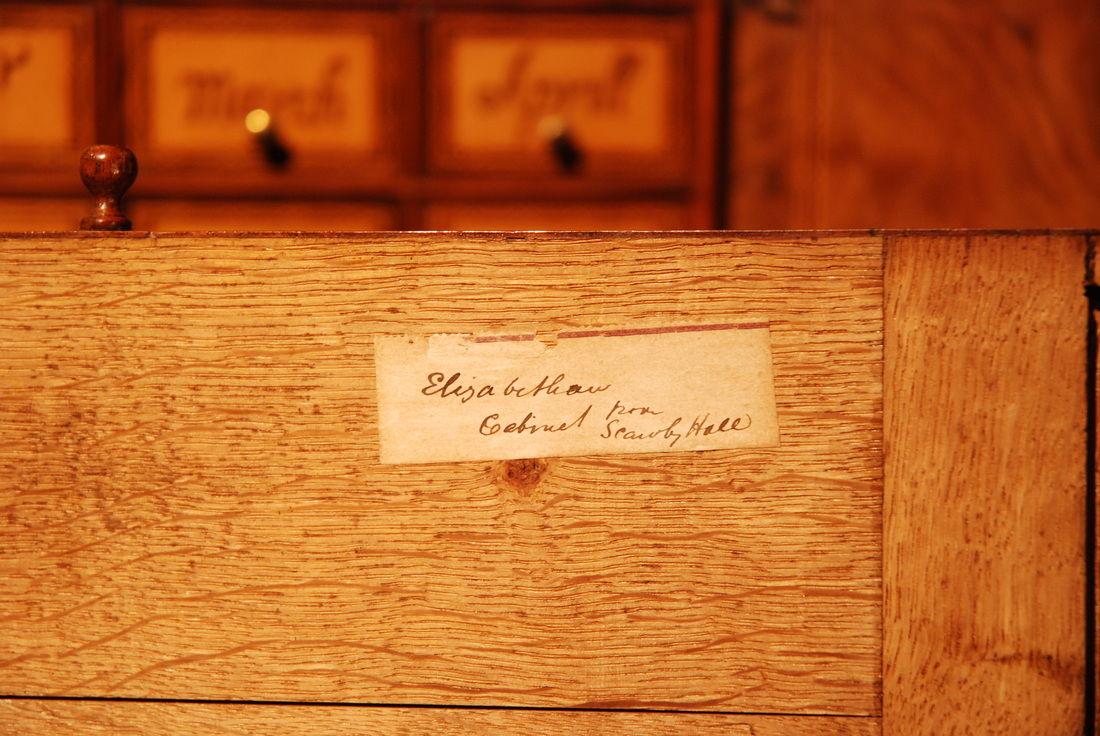
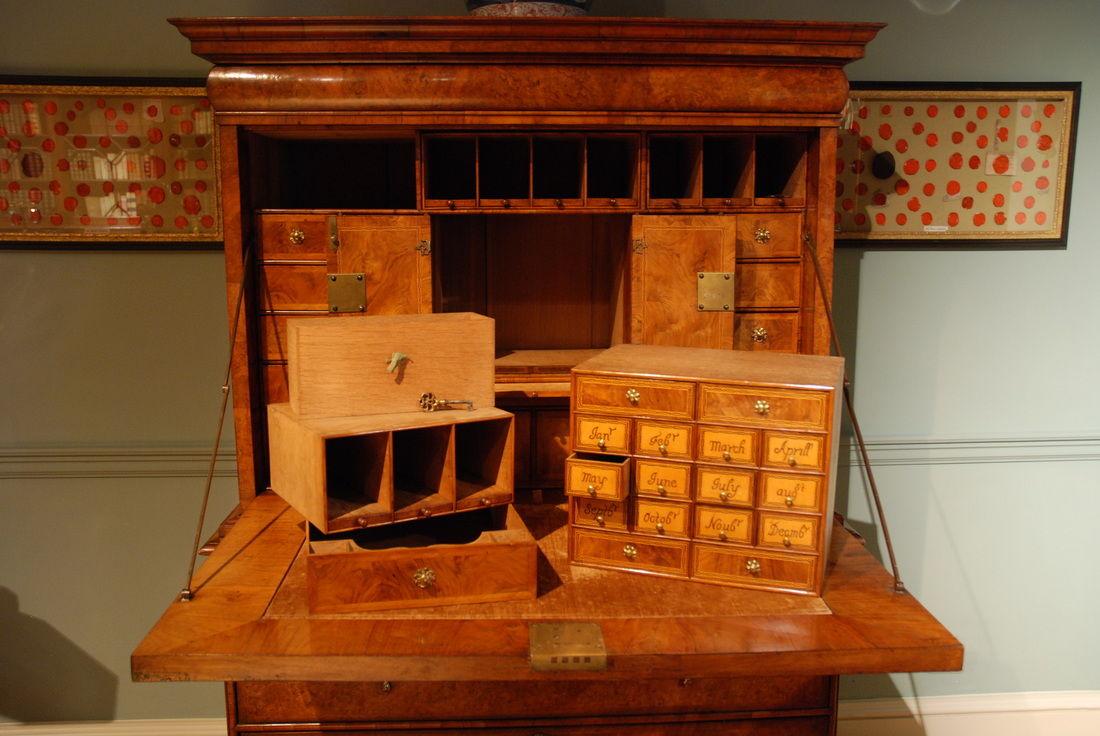
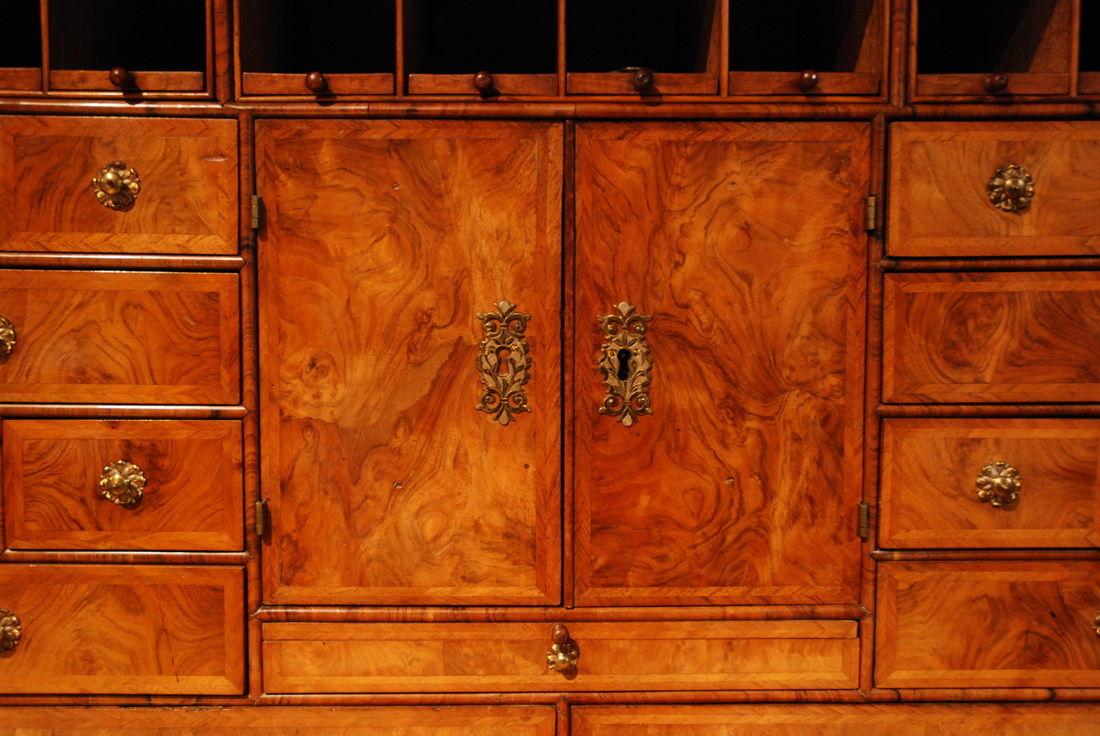
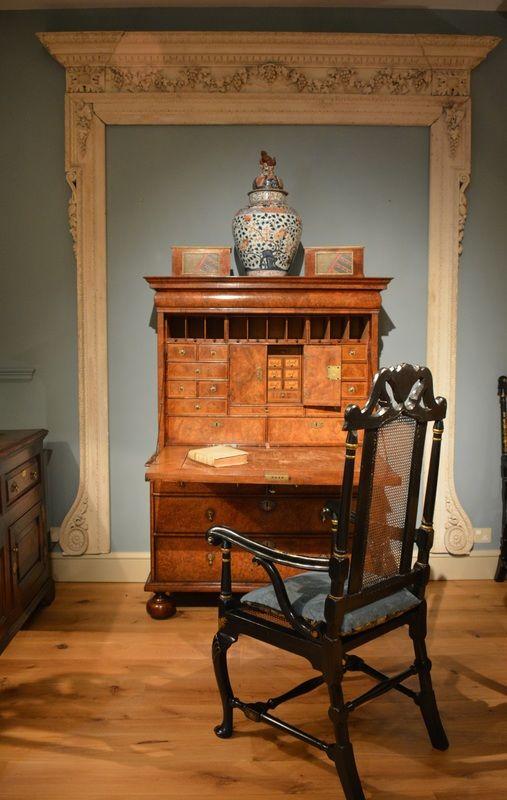
This object is eligible for a Certificate of BADA Provenance
The BADA Standard
- Since 1918, BADA has been the leading association for the antiques and fine art trade
- Members are elected for their knowledge, integrity and quality of stock
- Our clients are protected by BADA’s code of conduct
- Our dealers’ membership is reviewed and renewed annually
- Bada.org is a non-profit site: clients deal directly with members and they pay no hidden fees
An early 18th Century fall front writing cabinet(commonly called an escritoire or scriptor) the overall design echoing a classical column or pilaster. A similar example can be seen in the design by John Talman for an Italianate interior, dated 1711, Victoria and Albert Museum London 3436.246 cat. 20
Constructed in two parts, the upper section is headed by a (Tuscan) cornice below which is a pulvinated frieze containing a hidden drawer. The fall front below opens, supported on steel hinged stays, to reveal a fully fitted interior. At the head of this are ten open pigeon holes, each containing a flat oak cased walnut fronted lead paperweight.
These cased pigeon holes are divided into three sections each of which pulls out to reveal an oak ‘secret’ drawer. The interior is centred by a two door cupboard which contains a sliding fitment of sliding drawers, the central twelve inlaid with the months of the year, in some instances abbreviated. These internal drawers all have chequer work banding, as does the walnut veneered reveal and the interior of the doors.
To either side of this cupboard is an arrangement of six drawers, the lower drawer to the right containing divisions for ink, pounce pot, and quills.
Below the central cupboard is a slide bearing an old label reading ‘ Elizabethan (sic) Cabinet from Skawby Hall’. Below this is a shallow drawer and below again on either side are two locked fall front faux drawer fronts. The fall itself has a velvet covered ratcheted writing slope surrounded by a broad cross banded border.
The lower section contains two short and two long drawers. The moulding to accommodate the top section is fitted to the top of this base section.
The two short drawers, according to Adam Bowett’s classification, are of first phase construction, whilst the two long drawers are second phase construction having applied drawer runners that raise the bottom of the drawer above the dust boards.
The base mould is of ogee section, the whole standing on turned bun feet. All the drawer dividers have half round moldings.
All of the moldings on this piece are of cross grain walnut. All the front surfaces are veneered in the finest quality burr walnut, banded with herringbone inlay, in the case of the fall doubly so.
The sides of the piece are veneered in figured walnut. The carcassing is of deal or pine , with the drawer linings all of the best quality baltic oak.
The brassware to the interior is of exceptional quality, being embossed, chased and lacquered both gold and silver.
Dimensions
Height 66" Width 47" Depth 20"Stock number
C11The BADA Standard
- Since 1918, BADA has been the leading association for the antiques and fine art trade
- Members are elected for their knowledge, integrity and quality of stock
- Our clients are protected by BADA’s code of conduct
- Our dealers’ membership is reviewed and renewed annually
- Bada.org is a non-profit site: clients deal directly with members and they pay no hidden fees


